|
|
In problems 1-20, write A, S, or N depending on whether the statement is always true, sometimes true, or never true. |
|
1.
|
Equilateral triangles are similar. |
|
2.
|
If a theorem is true, then its converse is also true. |
|
3.
|
The complement of an acute angle is obtuse. |
|
4.
|
If the segments joining the midpoints of the opposite sides of a quadrilateral are perpendicular to the sides, then the quadrilateral is a rectangle. |
|
5.
|
Two lines perpendicular to the same plane are parallel to each other. |
|
6.
|
The sum of two sides of a triangle is half its perimeter. |
|
7.
|
If two coplanar isosceles triangles share the same base, the line joining their vertices will be the perpendicular bisector of the base. |
|
8.
|
If two coplanar lines are cut by a transversal so that alternate interior angles are complementary, then the given lines intersect to form an angle whose measure equals the difference between the measures of the complementary angles. |
|
9.
|
The diagonals of a trapezoid bisect each other. |
|
10.
|
If two lines are skew, then there exists a line that is parallel to both of the lines. |
- 11.
|
The diagonals of a kite are perpendicular bisectors of each other. |
- 12.
|
If two points are each equidistant from the endpoints of a segment, then the endpoints of the segment are equidistant from the two points. |
- 13.
|
As the number of sides of a convex polygon increases, the sum of the measures of its interior angles increases in increments of 180. |
- 14.
|
If a ray bisects an exterior angle of a triangle, then the ray is parallel to the opposite side of the triangle. |
- 15.
|
The sum of the measures of two exterior angles (at different vertices) of a triangle is greater than 180. |
- 16.
|
If each leg of a right triangle is a multiple of n, then the hypotenuse is also a multiple of n. |
- 17.
|
An obtuse triangle is congruent to an isosceles triangle. |
- 18.
|
An obtuse triangle is similar to an acute triangle. |
- 19.
|
Each exterior angle of a regular octagon has a measure greater than each exterior angle of a regular heptagon (i.e., 7-gon). |
|
20.
|
If a pair of opposite angles of a convex quadrilateral are complementary, then the exterior angles for the remaining pair of angles are also complementary. |
- 21.
|
If two angles of one triangle are congruent to two angles of another triangle, then the remaining corresponding angles are . . .
(A) congruent
(B) supplementary
(C) complementary
(D) acute
(E) obtuse |
- 22.
|
How much larger is the arithmetic mean of 18 and 50 than the geometric mean of those numbers?
(A) 4
(B) 32
(C) 38
(D) more than 100
(E) The arithmetic mean and geometric mean are equal. |
- 23.
|
The sum of the angle measures in a convex pentadecagon (15-gon) is _______ . |
- 24.
|
If consecutive angles of a quadrilateral have measures in the ratio 3:4:5:6, then it must be the case that the quadrilateral . . .
(A) can be inscribed in a circle
(B) is a kite
(C) is a trapezoid
(D) has congruent diagonals
(E) is not convex |
- 25.
|
Find P', the point that results when point P(6, 7) is rotated 180° clockwise about the origin. |
- 26.
|
Given straight angle APF, ray PB and ray PC trisecting obtuse ÐAPD, ray PE bisecting acute ÐDPF, and mÐCPE = 69, show your work and compute mÐAPE. |
- 27.
|
One of the trisectors of a right angle divides it into two angles. The ratio of the smaller angle to the larger angle is . . .
(A) 1:2
(B) 1:3
(C) 2:3
(D) 1:1
(E) none of the above |
- 28.
|
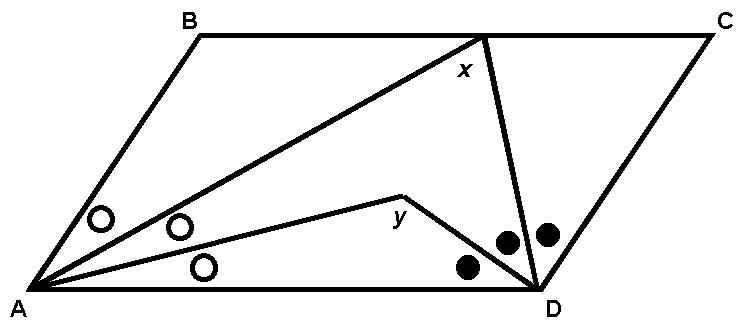
Quadrilateral ABCD is a parallelogram, and the angles at A and D have been trisected. Find the sum of the measures of x and y.
(A) 90
(B) 120
(C) 180
(D) 140
(E) insufficient information
|
- 29.
|
Which of the following are equilateral quadrilaterals?
(A) parallelogram and rectangle
(B) kite and rhombus
(C) square and rhombus
(D) none of the above |
- 30.
|
The slope of a line is 5/2. The line contains (5, 11) and a point whose x coordinate is 10. Compute the points y coordinate. |
- 31.
|
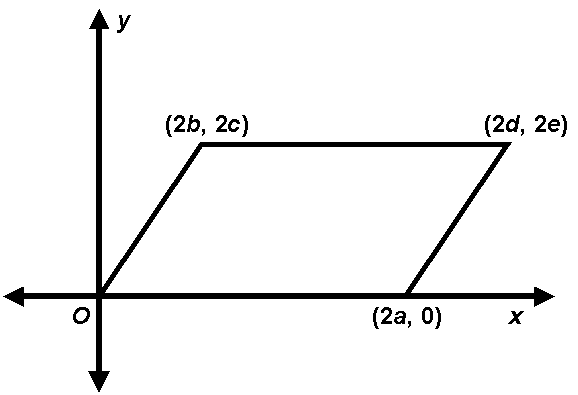
If the figure above shows a parallelogram, why does (d, e) = (a + b, c)?
(A) Opposite sides of parallelogram are ||.
(B) Opposite sides of parallelogram are @.
(C) Opposite angles of a parallelogram are @.
(D) Diagonals of a parallelogram bisect each other.
(E) If the midpoints of consecutive sides of a parallelogram are joined, another parallelogram is formed.
|
- 32.
|
If 2 angles are such that their supplements are complementary, then compute the sum of the measures of the original 2 angles. |
- 33.
|
If ÐP and ÐQ are supplementary and congruent, which of the following must be true?
(A) ÐP and ÐQ are right angles
(B) ÐP and ÐQ are straight angles
(C) ÐP and ÐQ are each 45°
(D) ÐP and ÐQ are vertical angles
(E) none of the above |
- 34.
|
If P is on line j, Q is on line k, and segment PQ is ^ to both j and k, then . . .
(A) j || k
(B) j ^ k
(C) j and k are skew
(D) Any of the above may be true.
(E) Either (A) or (C) is true. |
- 35.
|
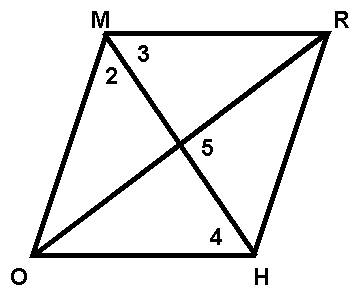
In the diagram above, quadrilateral RHOM is a rhombus. Which of the following is not necessarily true?
(A) Ð5 = 90°
(B) Ð2 @ Ð3
(C) Ð2 @ Ð4
(D) mÐ5 > mÐ4
(E) none of the above (i.e., statements (A) through (D) must all be true)
|
- 36.
|
Given trapezoid ABCD with segment AB || segment CD, we can conclude that . . .
(A) ÐA comp. ÐD
(B) ÐA supp. ÐD
(C) ÐA @ ÐD
(D) segment AC @ segment BD
(E) segment AC and segment BD bisect each other |
- 37.
|
An angle is Ό as large as its supplement. Find the measure of the complement of the angle.
(A) 36
(B) 54
(C) 72
(D) 144
(E) none of the above |
- 38.
|
Find the distance between the trisection points of the segment joining (7, 10) and (5, 6). |
- 39.
|

Solve for x.
(A) 46 2/3
(B) 1/3
(C) 0
(D) Æ
(E) insufficient information
|
- 40.
|
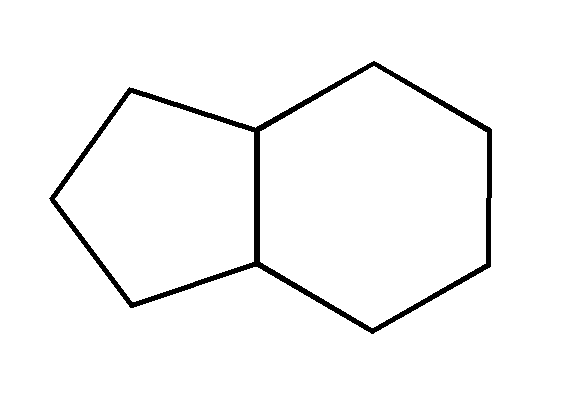
Given two regular polygons joined as shown with a congruent side in common, what is the regular polygon with the largest number of sides that will fit without overlap into the "V" at the top of the diagram?
(A) square
(B) pentagon
(C) hexagon
(D) heptagon
(E) octagon
|
- 41.
|
Find the measure of each interior angle of a regular octagon.
(A) 45
(B) 60
(C) 120
(D) 135
(E) insufficient information |
- 42.
|
If ÐA supp. ÐB, ÐB comp. ÐC, and the ratio of mÐA to mÐC is 7:2, compute mÐB. |
- 43.
|
- Two sides of a triangle have lengths 6 and 8. Which of the following could not be the length of the third side?
(A) 2
(B) 5
(C) 8
(D) 10
(E) 13
|
- 44.
|
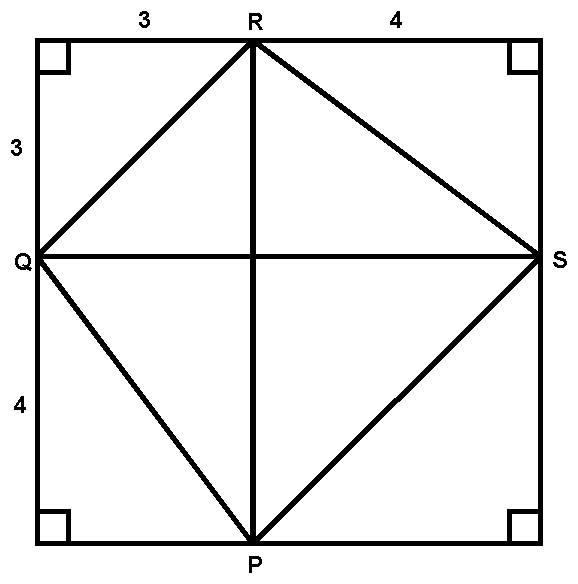
The diagram has the origin at its lower left corner, point P on the x-axis, and point Q on the y-axis. Segments RP and QS are vertical and horizontal, respectively. Prove that quadrilateral PQRS is a trapezoid and compute its perimeter (show work).
|
- 45.
|
Given: E is the intersection of segment AC and segment BD, and DDCE @ DBAE. Which of the following is not necessarily true?
(A) line AD is parallel to line BC
(B) line CD is parallel to line AB
(C) line AC bisects segment BD
(D) E is the midpoint of segment AC
(E) none of the above (i.e., statements (A) through (D) must all be true) |
- 46.
|
The sum of the exterior angles of a regular polygon is 360. What is the name of the polygon?
(A) triangle
(B) square
(C) pentagon
(D) hexagon
(E) insufficient information |
- 47.
|
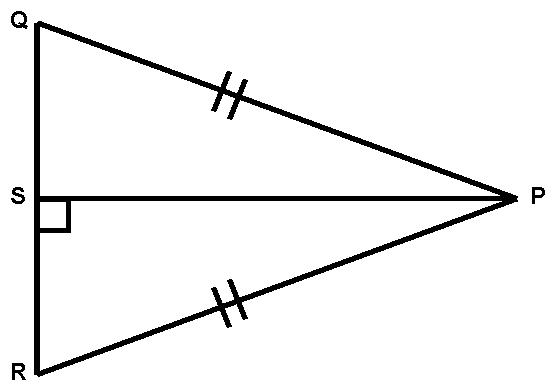
DPSQ @ DPSR by . . .
(A) SAS
(B) SSS
(C) SSA
(D) HL
(E) The triangles are not necessarily @.
|
- 48.
|
Given points P(0, 3), Q(12, 8), and R(15, 3), estimate ÐPQR.
(A) 5.1°
(B) 22.6°
(C) 42.7°
(D) 67.4°
(E) 83.2° |
- 49.
|
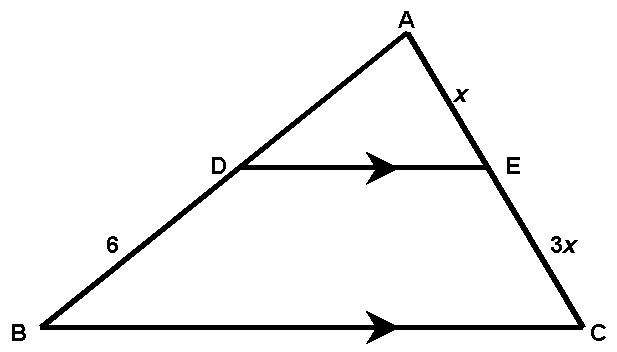
AB equals . . .
(A) 2
(B) 2x
(C) 8
(D) 8x
(E) insufficient information
|
- 50.
|
If DCAT @ DDOG, CT = 5x 3, DO = 25 + x, AT = 3x, DG = y, and CA = y + 6, show work and compute GO. |
- 51.
|
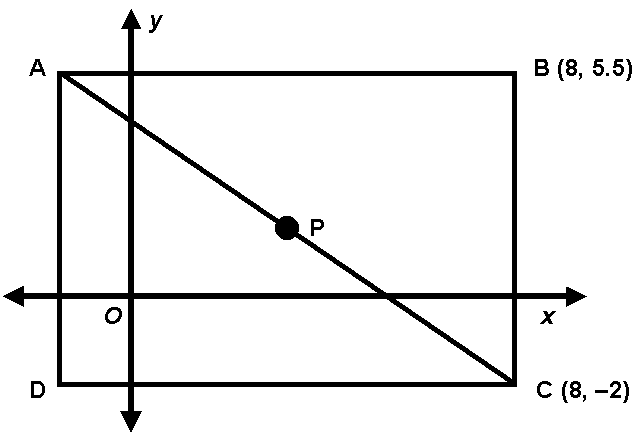
If ABCD is a rectangle and the x coordinate of D is 1.5, calculate the coordinates of P, the midpoint of segment AC.
|
- 52.
|
In a triangle with sides of length 5, 8, and 2x + 9, find the restrictions on the value of x.
(A) 2 < x < 4.5
(B) 3 < x < 2
(C) 0 < x < 2
(D) 4.5 < x < 7
(E) 13 < x < 14 |
- 53.
|
In right triangle ABC, where ÐC is the right angle, BC > AC. Find the restrictions on mÐA.
(A) 0 < mÐA < 45
(B) 0 < mÐA < 60
(C) 0 < mÐA < 90
(D) 30 < mÐA < 60
(E) 45 < mÐA < 90 |
- 54.
|
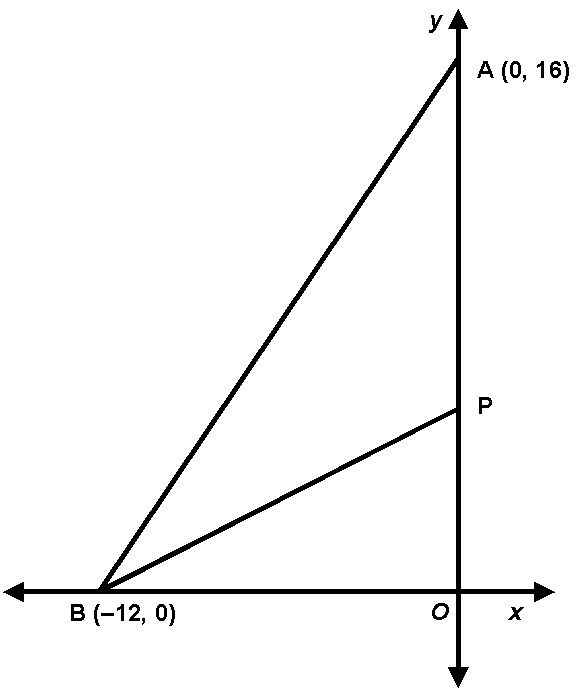
Given: diagram as shown, where ray BP bisects ÐABO, OA = 16, and OB = 12
Prove: P is the point (0, 6)
|
- 55.
|
Given that Z (11, 11) is the midpoint of segment QR, where Q has coordinates (5, p) and R has coordinates (s, t), which of the following is true?
(A) s = 17 and t = p + 22
(B) s = 17 and t = p + 22
(C) s = 17 and t = (p + 22)
(D) s = 17 and t = p 22
(E) none of the above |
- 56.
|
In the diagram in #54, add point M midway between A and B, and assume that the conclusion of #54 has already been proved. Also assume that you have already computed AB, which is 20.
Given: diagram as above, with M the midpoint of segment AB, OP = 6, and AB = 20
Prove: mÐBPM = 45 |
- 57.
|
Match each of the labeled regions in the Venn diagram to the correct name below.
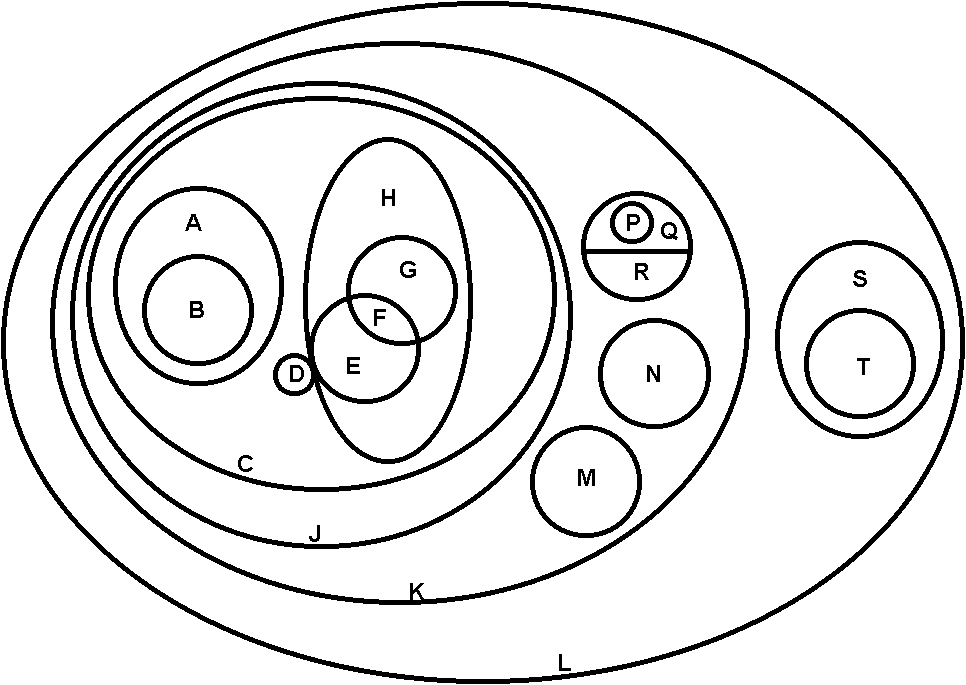
___ hexagons
___ rhombuses
___ plane figures
___ squares
___ pentagons
___ ellipses
___ quadrilaterals
___ polygons
___ isosceles triangles
___ rectangles
___ parallelograms
___ equilateral triangles
___ circles
___ trapezoids
___ isosceles trapezoids
___ convex quadrilaterals
___ scalene triangles
___ convex kites that are not rhombuses |
|
58. |
Refer to the diagram above. If D = {convex kites that are not rhombuses} and E = {rhombuses}, what name is given to D È E?
(A) {rhombuses}
(B) {convex kites}
(C) {rhombuses that are not convex kites}
(D) {convex kites that are not rhombuses}
(E) { } |
|
59. |
Refer to the diagram above. If Q = {isosceles triangles} and R = {scalene triangles}, then what name is given to Q È R?
(A) {triangles}
(B) {equilateral triangles}
(C) {isosceles triangles}
(D) {circles}
(E) { } |
|
60. |
Which of the following would be a correct way of denoting the empty set? Mark all that apply.
(A) Æ
(B) {Æ}
(C) { }
(D) 0
(E) none of the above |
|
61. |
Which of the following is the contrapositive of "When Woody is hungry, he eats everything in sight"?
(A) If Woody is not hungry, he does not eat everything in sight.
(B) If Woody is not eating everything in sight, he is not hungry.
(C) If Woody is eating everything in sight, he is hungry.
(D) If Woody is hungry, he is not necessarily eating everything in sight.
(E) none of the above |
|
62. |
Find a statement that is equivalent to the converse of the following statement: "Every American who is convicted of a serious crime will serve time in prison."
(A) If you serve time in prison, then you are an American who did not commit a serious crime.
(B) If you serve time in prison, then you are either an American or a person who committed a serious crime (or both).
(C) If you serve time in prison, then you are neither an American nor a person who committed a serious crime.
(D) If you serve time in prison, then you are both an American and a person who committed a serious crime.
(E) none of the above |
|
|
For problems 63 through 68, write the name of the quadrilateral that most precisely describes plane figure ABCD. |
|
|
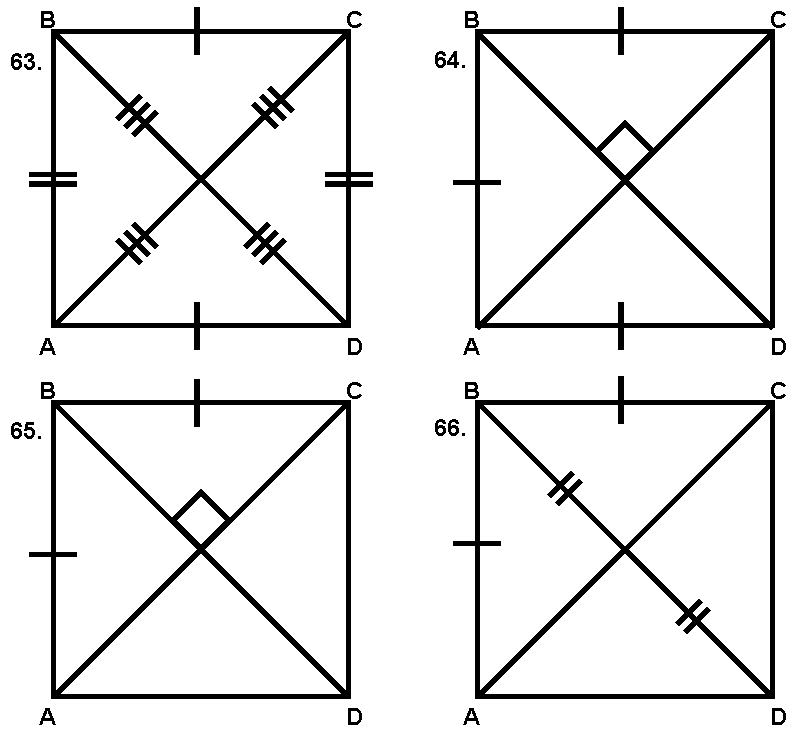
|
|
67. |
If the diagonals in #66 are perpendicular, ABCD must be a _______ . |
|
68. |
If the diagonals in #66 are perpendicular and BD = AC, then ABCD must be a _______ . |
|
69. |
As you may know, the Washington Monument is 555 feet tall. At a moment when the monument is casting a 215-foot shadow, a visiting celebrity is observed to be casting a shadow exactly 2 feet, 9Ύ inches long. How tall is the celebrity, and what league does he or she play in? Show a diagram and your work. |
|
70. |
As has been known for millennia, the full moon occupies almost exactly the same apparent portion of the sky that the sun does. This remarkable coincidence is most noticeable during a solar eclipse, when only the faintest rim of the sun (its corona) is visible. If the moon has a diameter of about 3500 km and a mean distance from the earth of approximately 380,000 km, and if the sun's mean distance from earth is approximately 150 million km (93 million miles), compute the sun's diameter to the nearest 10,000 miles. Show a diagram and your work. |











